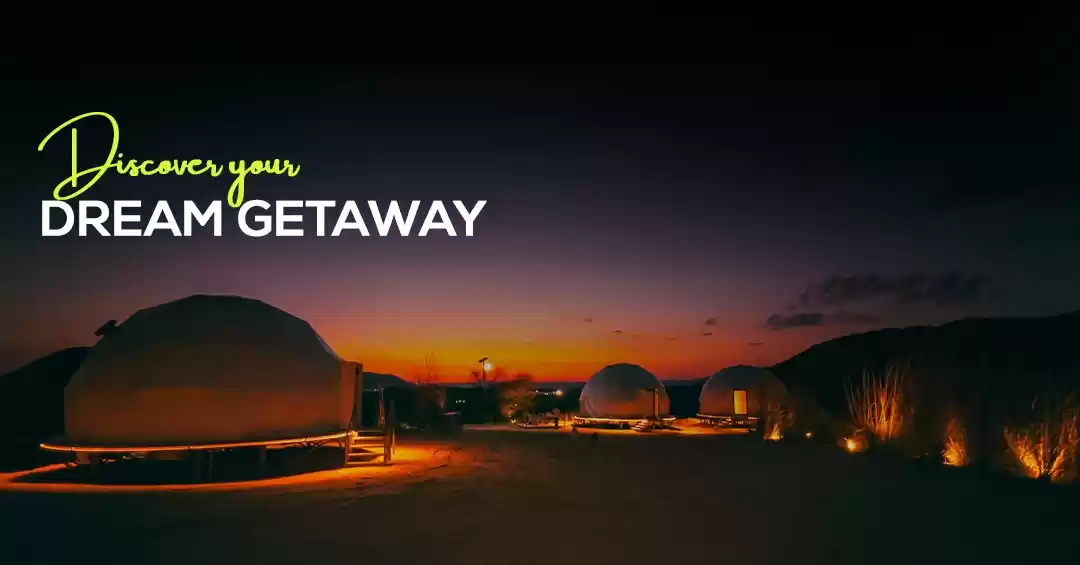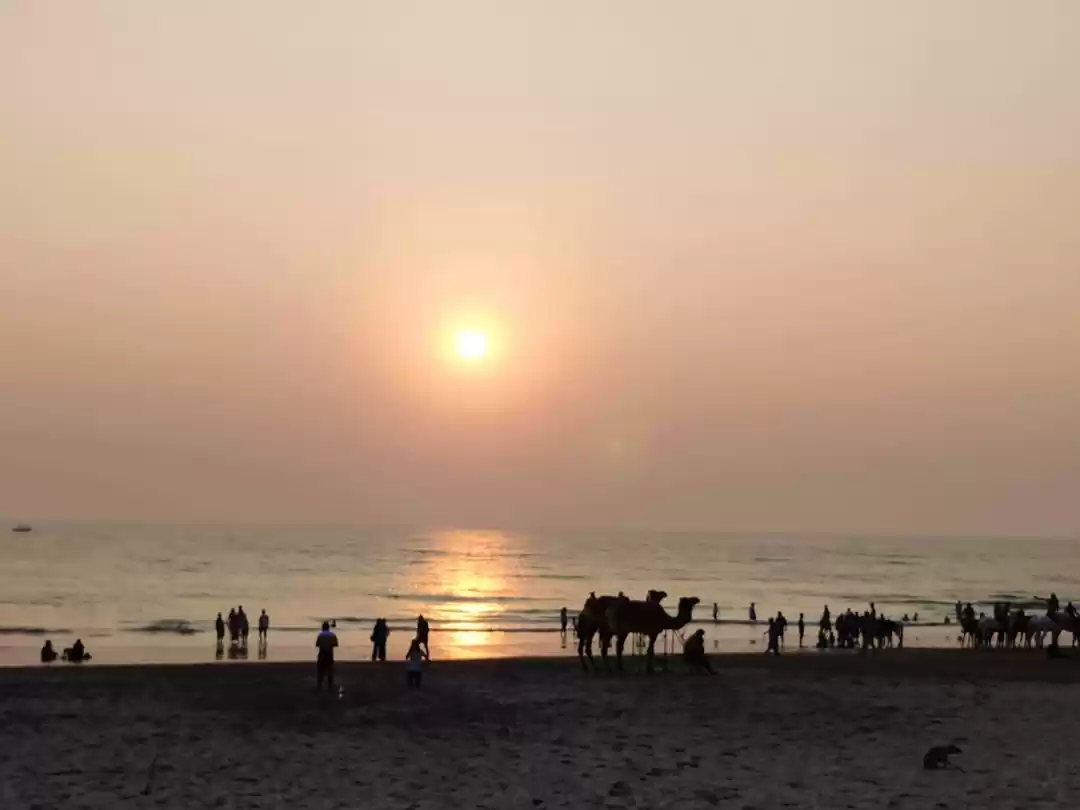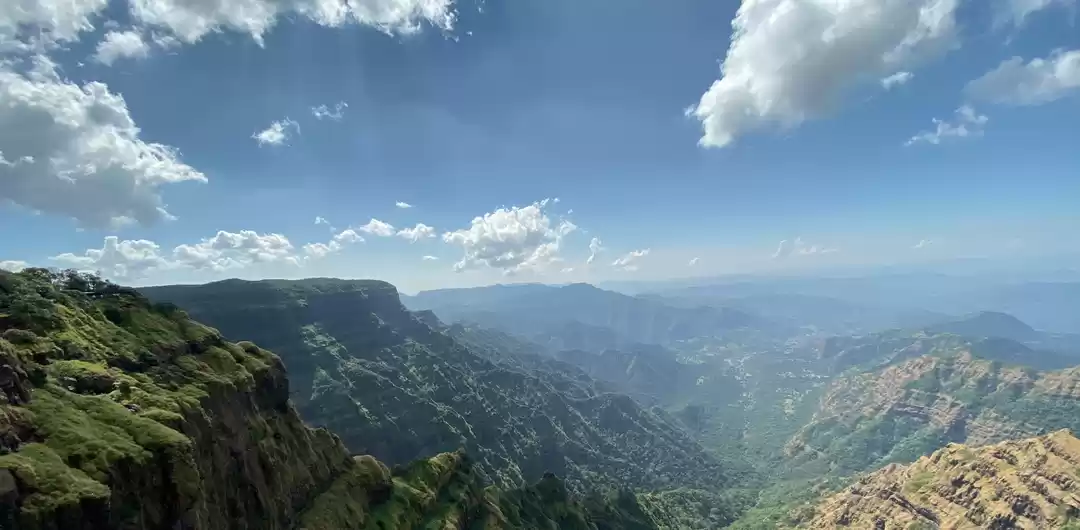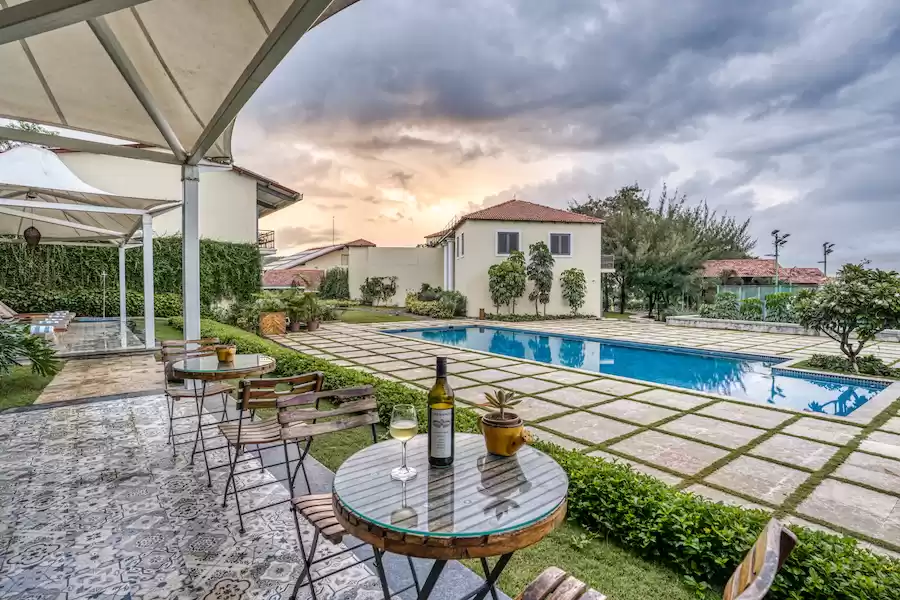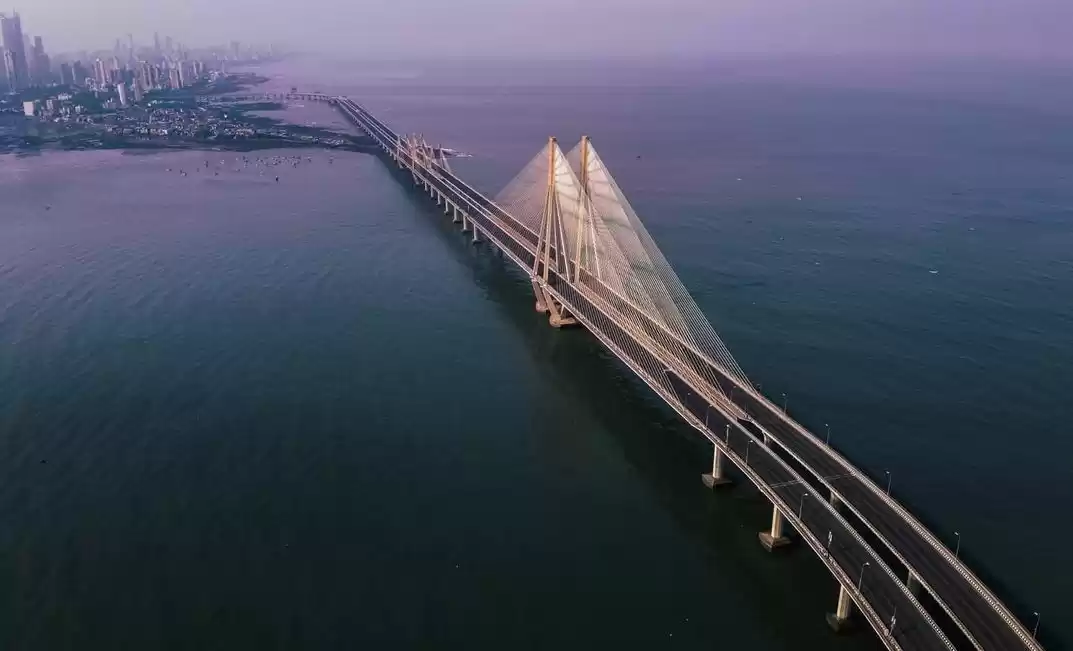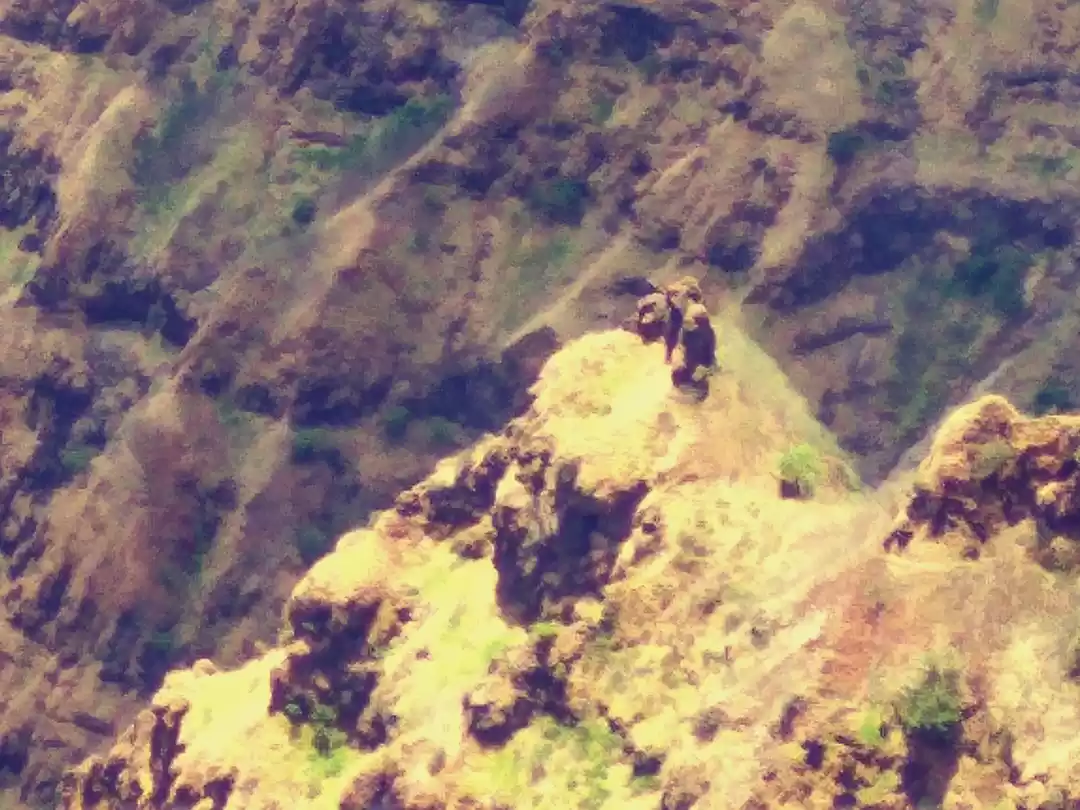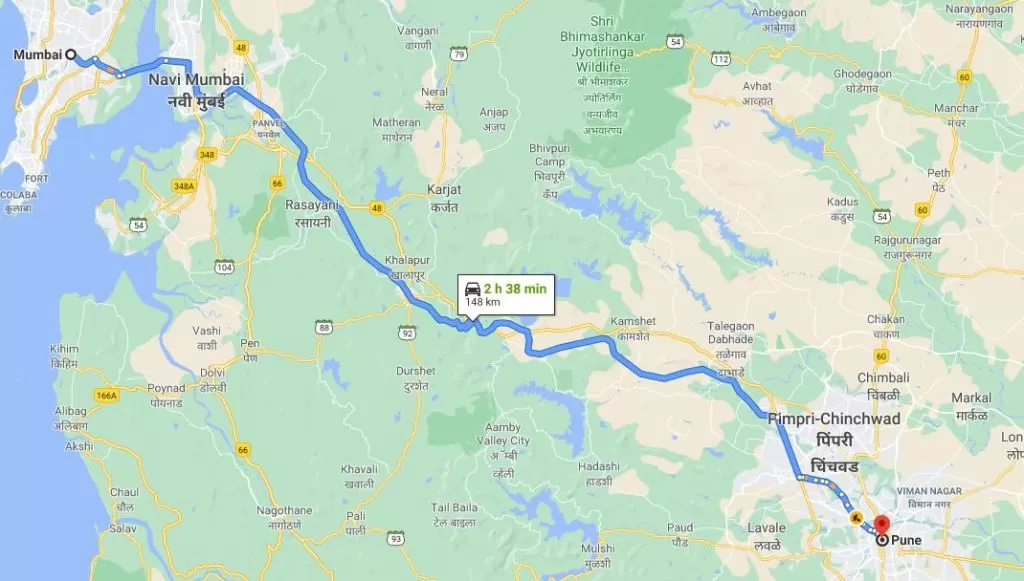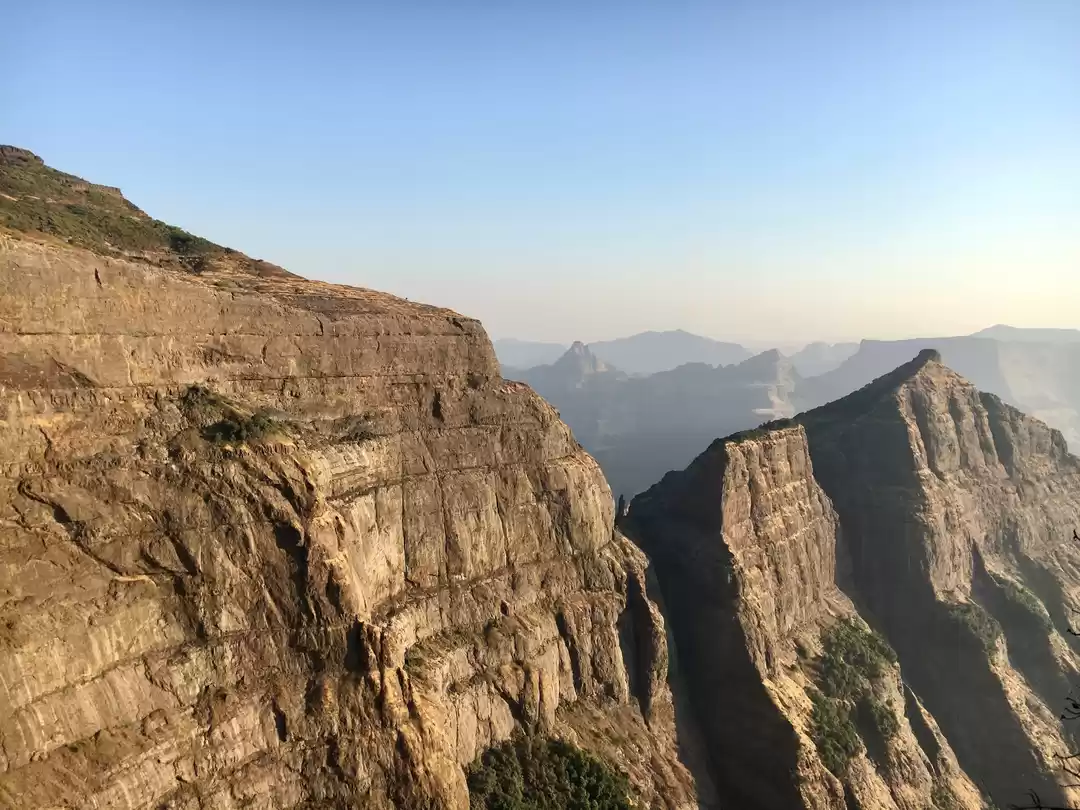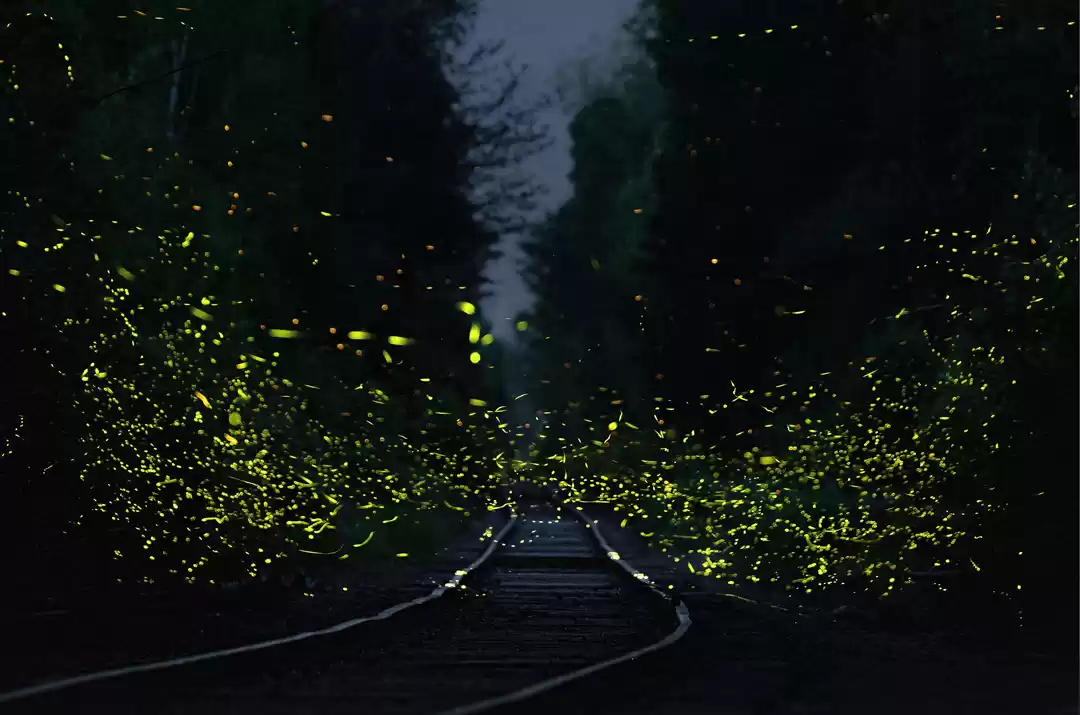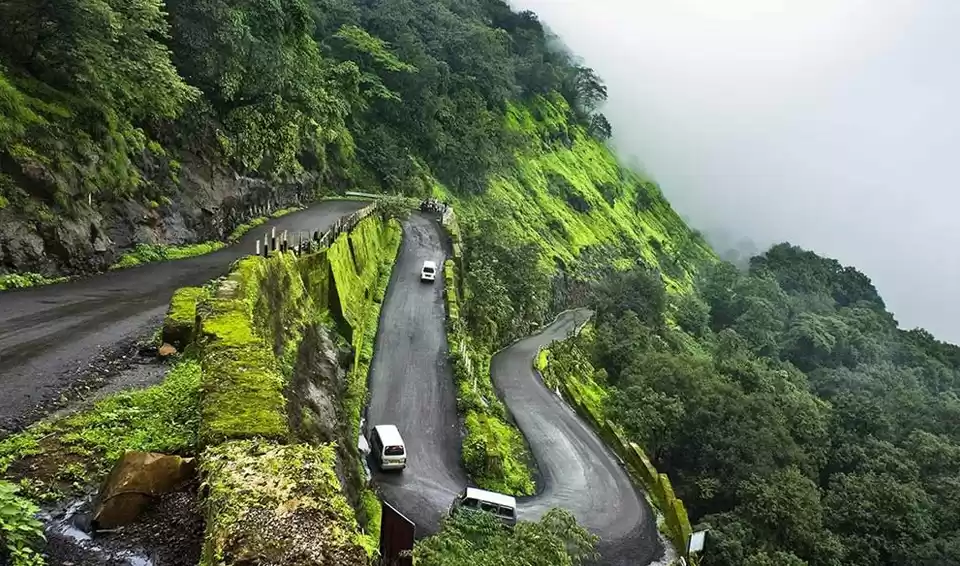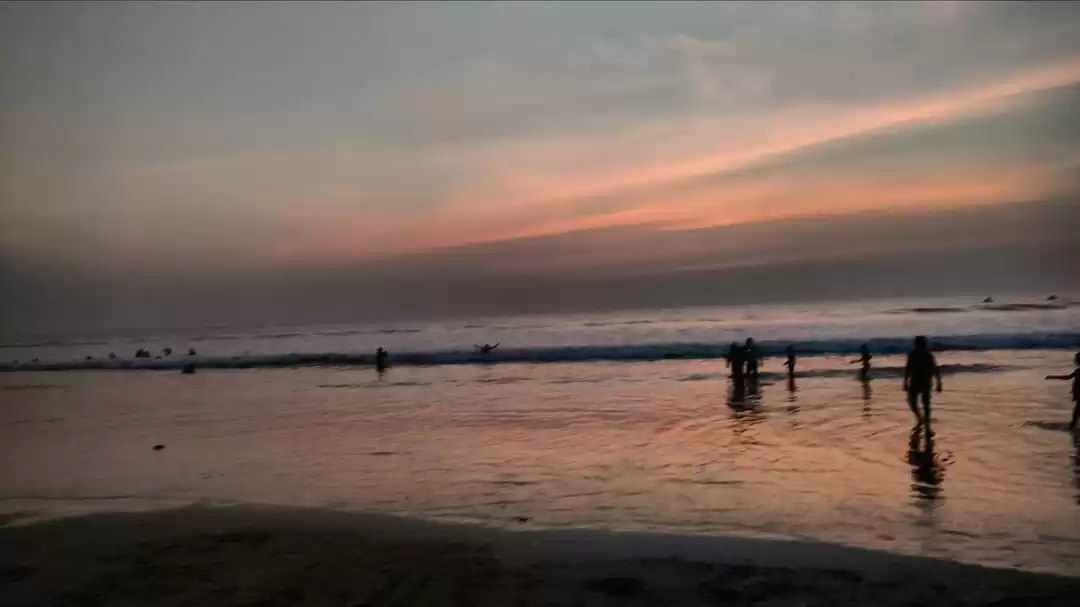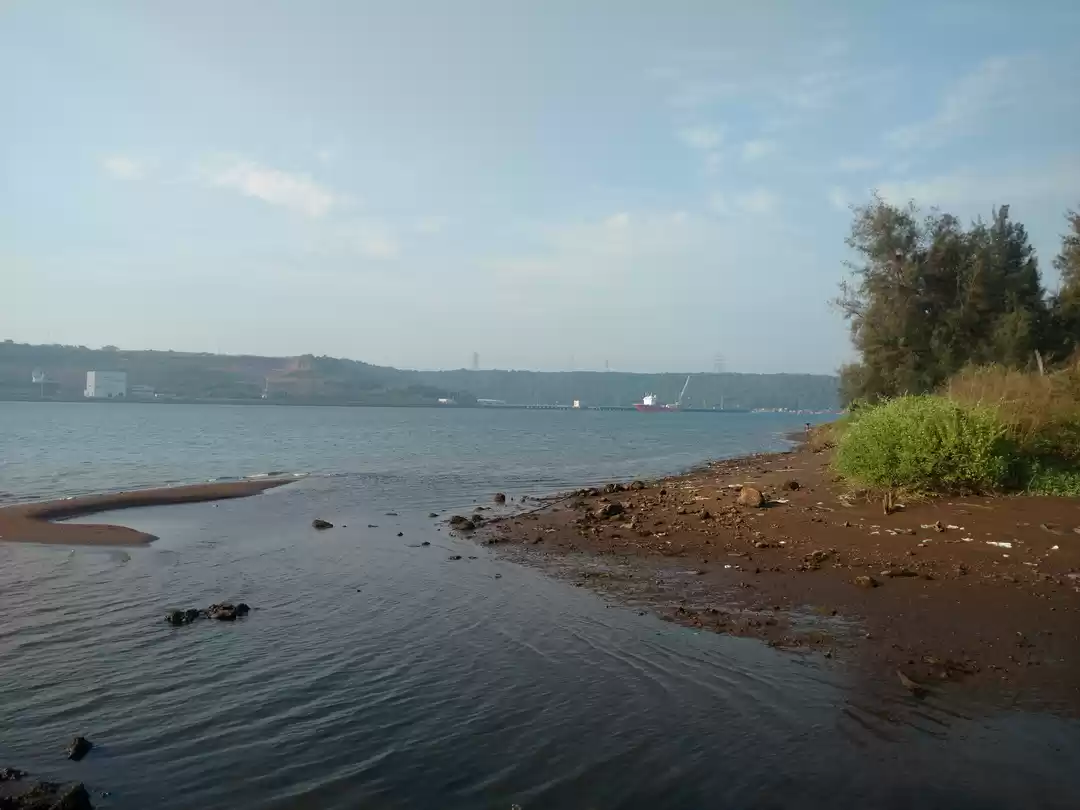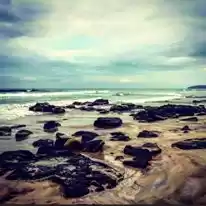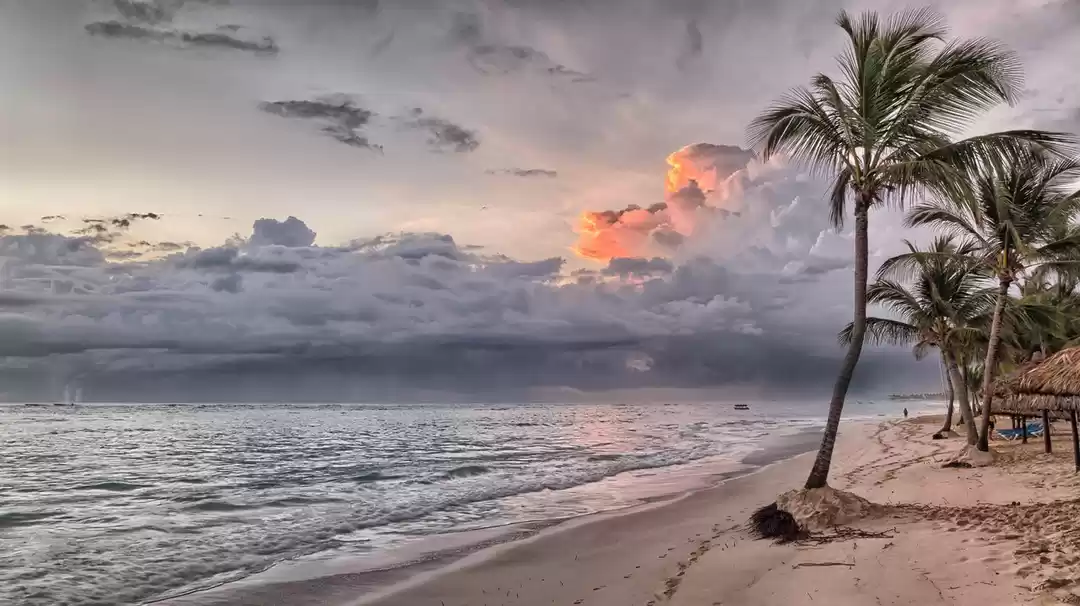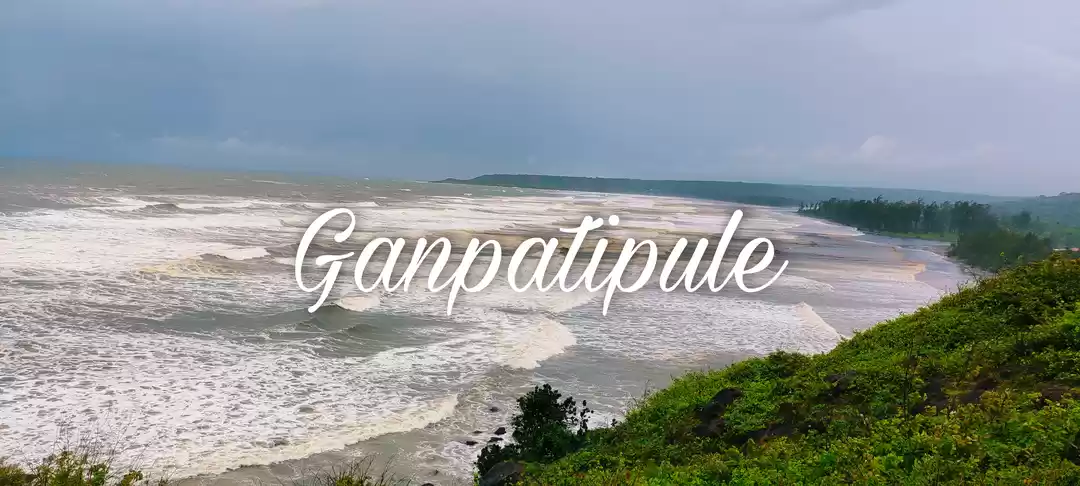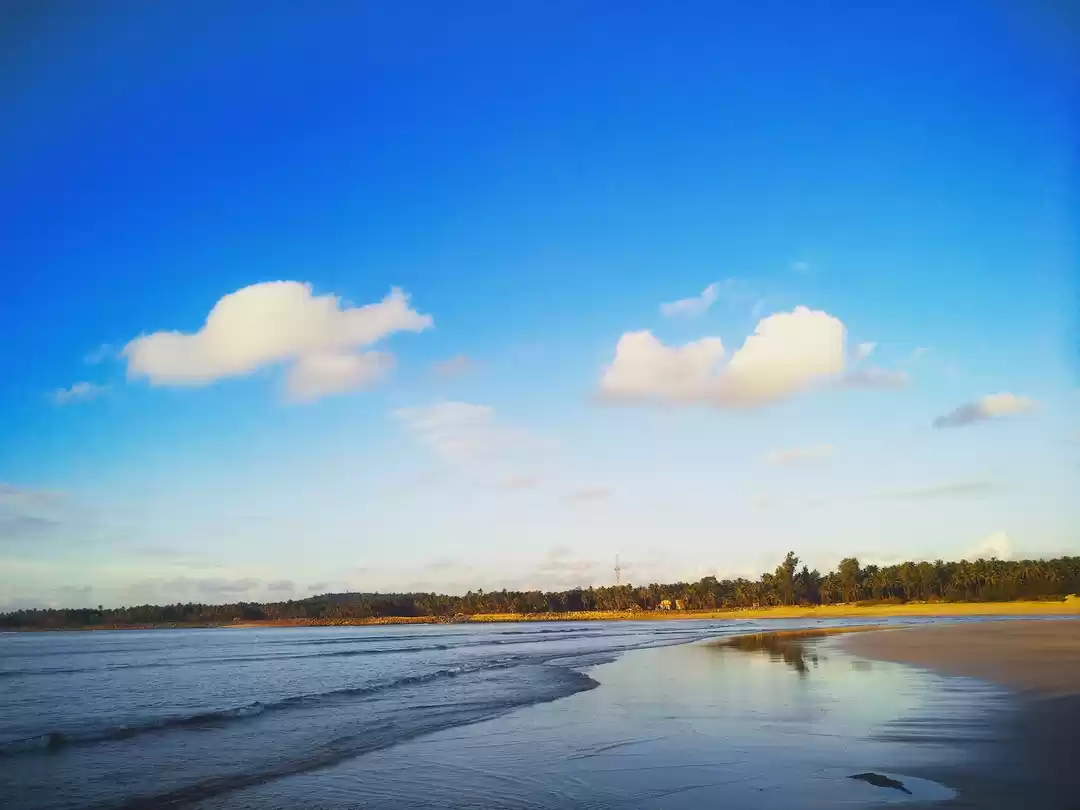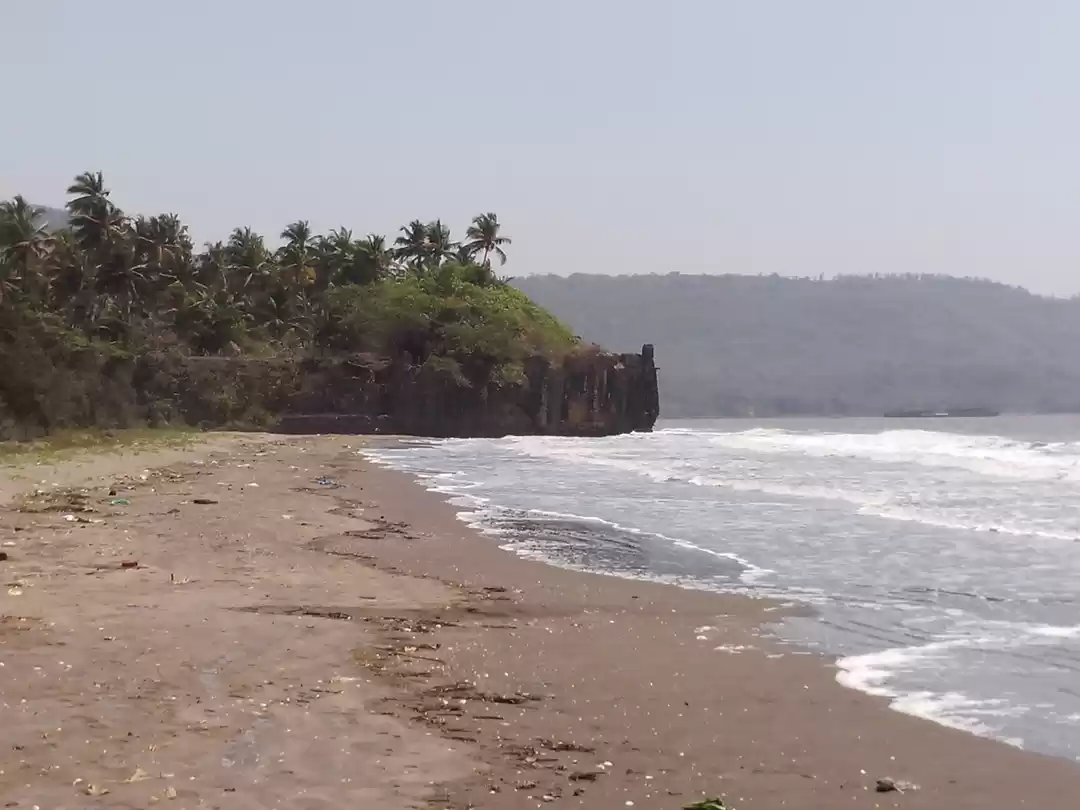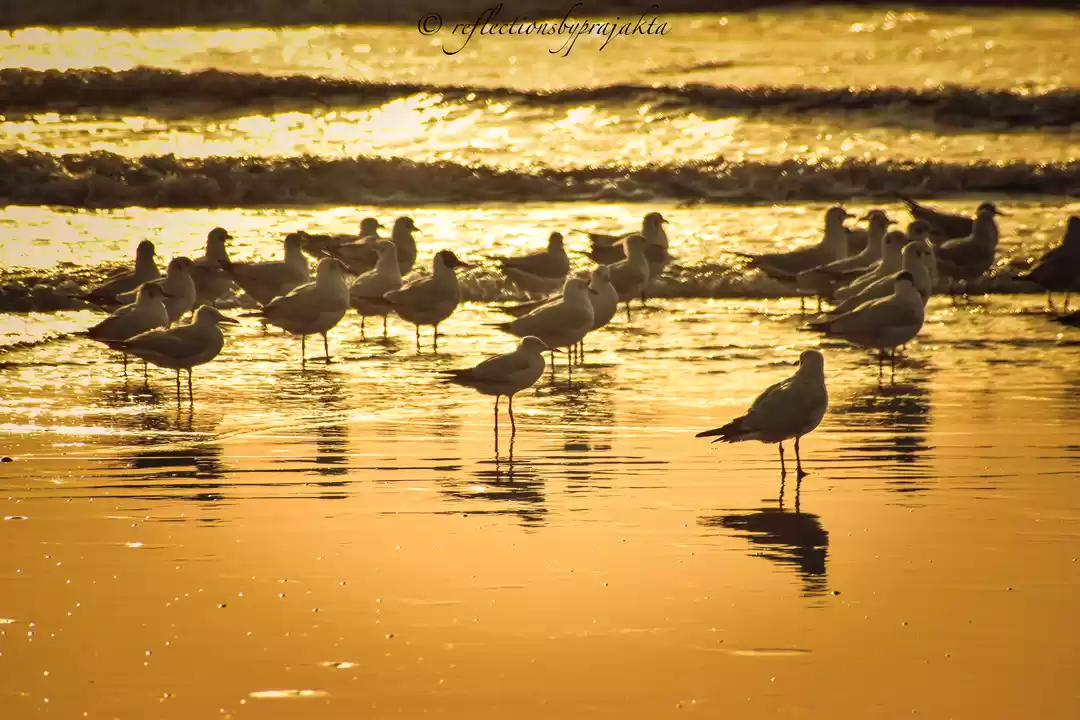What if I tell you that you can see all of the following things in a single district inside India: the birthplace of a famous freedom fighter, pristine beaches, Olive Ridley turtles, alphonso mangoes, cashewnut plantations, gorgeous mountain ghat roads and sea-side temples. The district's name translates to a 'mountain of jewels'. That would be Ratnagiri district of Maharashtra, a district that lies between the sea and the mountains and has some of the richest people in the country, courtesy the export of Alphonso mangoes.
Geography of Ratnagiri district
Ratnagiri district is one of the 6 coastal districts in Maharashtra that are classified as Konkan (the others being Palghar, Thane, Mumbai, Raigad and Sindhudurg from north to south). The Arabian sea flanks the west of the entire district, while the Sahyadri mountain range borders all of the east. Raigad and Sindhudurg districts lie on the north and the south of Ratnagiri district. Both of those districts are also part of Konkan. Crossing to the east of the Sahyadri range will put you either in Satara district or in Kolhapur district, depending on which Ghat highway you take. Important municipalities in Ratnagiri district are Ratnagiri city itself, Chiplun, Khed, Sangameshwar - Devrukh, Rajapur and Lanja.
Being between the west coast and the Sahyadris, Ratnagiri district receives massive amounts of rainfall every monsoon from the south-west monsoon winds, ranging from 2500 mm to 4000 mm annually. This makes for a good monsoon trip as you'll see lush greenery and plenty of waterfalls between June and September. Winters are pleasant and are perfect for beach getaways to one of the quieter beaches in the district.
People of Ratnagiri
Majority of Ratnagiri's population is involved in occupations related to farming. Alphonso mangoes are a prized produce in the district and nearly every rural household cashes in during peak season. Rice and cashews are other crops that are grown. During the farming off-season in summer, people look towards other occupations such as tourism, restaurants, etc.
The native and the most spoken language in Ratnagiri district is Maharashtra's state language Marathi. Other languages like English and Hindi are spoken in the urban areas like Ratnagiri city and Chiplun. In the rural areas, it is hard to get by without Marathi. People may understand a little bit of English and Hindi when you speak, but are unable to reply fluently and simply revert to Marathi. It will be beneficial if you speak the language or travel with someone who does.
Most people are Hindus, with the chief family deity being Lord Shiva or Lord Ganesha. Sangameshwar tehsil has ancient and important Shiva temples, while Ganpatipule and Hedavi have important Ganesha temples. The fisherfolk in Ratnagiri city's Miryabandar area are Muslims and are equally fluent in both Marathi and Urdu (which is the same as Hindi, but with Arabic script).
Let's take a tour around Ratnagiri district.
Ratnagiri city
The headquarters of the district is a coastal city and the birthplace of Lokmanya Tilak. Ratnagiri is a fascinating city with plenty of sight-seeing places.
Birth home of Lokmanya Tilak: At Ratnagiri's Tilak Aali, about a kilometre from the main bus depot is the the street on which you will see the two-storeyed ancestral home where Lokmanya Bal Gangadhar Tilak was born. Born in a traditional Marathi Brahman family, Lokmanya Tilak moved to Mumbai (erstwhile Bombay), where he started a mass awakening against the slavery imposed by British rule, in the form of public celebration of Ganesha festival. He also started newspapers such as Kesari and Maratha. He was also one of the founders of Pune's Fergusson college.
Lokmanya Tilak's birth home contains several photos from his life and several boards with stories. All the stories and captions are in Marathi only. if you do not understand the language, you should ask the host / caretaker inside the house for translation. Surrounding the house is a garden with chickoo trees and those with seasonal fruits.
Thibaw point and palace: After being exiled from Myanmar's Mandalay, Burmese king Thibaw Min was housed at the British palace in Ratnagiri. His monarch status was stripped off, but he was offered government pension every month. At Ratnagiri, king Thibaw lived a reclusive life, but took part in the city's celebrations during festivals like Diwali. His family was instrumental in the formation of the Bombay Burma Teak Company.

Today, Thibaw palace is a museum. It replays the story of the Burmese lineage in India. Close to Thibaw palace is a breath-taking viewpoint called Thibaw point, from where one can see the Arabian sea, Ratnagiri's coastline, light house and a mesmerising sunset.
Beaches: Pandhra Samudra, Kala Samudra, Bhatye: These are three beaches inside Ratnagiri city and are best visited in the evening to watch a beautiful sunset. The word Pandhra means white in Marathi, while the word Kala means black. Samudra means sea. The two beaches are so named because of the colour of the sand at that respective beach. Kala Samudra is not black because of impurities, but rather due to the trace of aluvial soil that you can see as black patches in the beach sand.
Marine aquarium and museum: This is one of the best marine museums you will see in India. You will see a huge aquarium with several fish found from the Arabian sea. There are several exotically coloured fish and even sea horses. There is a seperate gallery for art made from sea shells, shark teeth and corals.

Ratnadurg fort, Bhagavati temple and light house: The above three are part of a hill spur at the west-most tip of Ratnagiri city. Ratnadurg fort and Bhagavati temple are part of the same hill top campus and was built by the famed Maratha admiral Kanhoji Angre, whose navy made the Marathas under Chhatrapati Shivaji a dominating force in the west coast of India. Apart from the hill top, there is an interesting natural wonder to see at the base of the hill, where the sea keeps crashing into the rocks. The sea has formed a natural cave at the base of the rocks. From the top of Ratnadurg, one can see the northern coastline of Ratnagiri city, which includes Pandhra Samudra.

On the neighbouring hill spur, the Ratnagiri lighthouse stands in the middle of a marine operations office. In the evening, the tower sends out strobes of light for incoming ships. From this hill, one can see Kala Samudra and Thibaw point. Both hills offer commanding views of the Arabian sea, justifying why the fort and the lighthouse are built here in the first place.
Now let's look at the rest of the district, which also has very fascinating things to see.
Parshuram temple and Sawatsada waterfall, Chiplun
On the national highway NH-17 from Mumbai to Chiplun, via Alibag, Mahad and Khed, you will come across a hilly section between Khed and Chiplun. This section is called the Parshuram Ghat. At the peak of the Ghat, one can visit the Parshuram temple built during the rule of Chhatrapati Shahu Maharaj (17th century).
During monsoon, as soon as you descend the Ghat, you will not miss the sight of Vashishth river plunging in a thick waterfall a mere 100 metres from the highway. This waterfall is named Sawatsada waterfall. The waterfall is mesmerising, but during weekend evenings, the whole of Chiplun city seems to assemble here to enjoy their time. So time your trip to Chiplun accordingly, preferably a weekday and before noon.
Sahyadri Ghat roads
Two Ghats lead from Ratnagiri district into the Sahyadris. The first one, Kumbharli Ghat, starts from Chiplun, goes through Koyana dam and ends at Satara district's Karad town. The second Ghat, Amba Ghat, starts from Rajapur town and also ends at Karad. Both Ghats have beautiful viewpoints, greenery and waterfalls. We have covered Koyana dam, Karad and Satara in the post District Focus: Satara, Maharashtra.
Olive Ridley turtles: Velas and Kelashi
At the northern end of Ratnagiri district are two beaches, Velas and Kelashi, both of which are home to the hatching and breeding of Olive Ridley turtles, an endangered species. Velas is more popular and also has been developed as an information centre on Olive Ridley turtles. The hatching season happens during January and February, when you can see scores of baby turtles emerging from eggs and rushing into the sea, their tiny legs carrying them as fast as they possibly can.
Beaches: Velas, Kelashi, Velneshwar, Guhaghar, Ganeshghule and more…
Being a coastal district, Ratnagiri is home to several beaches, most of which are in good condition due to less tourism. Ratnagiri district is too far away from major cities like Mumbai, Pune and Panjim for a family one-day getaway. Commute times range from 7 to 11 hours depending on where you are travelling from. As a result, families with children usually avoid Ratnagiri's beaches as a first choice even for weekend getaways. Some beaches like Ganeshghule and Palshet are in pristine villages with no ready access to hotels or restaurants. As a result, Ratnagiri's beaches are frequented only by people from cities within the district or from Kolhapur. Otherwise you will only find long term travellers and backpackers. Guhaghar is among the most popular beaches in Ratnagiri district and attracts sizeable crowds during winter weekends.

Please note that while the beaches are not closed during monsoon, they are not fun to be in. The monsoon raises the levels of the sea. The water advances into the land and usually covers the beaches, making them wet and sticky. Beaches are more fun to be in winter, when the waves keep their distance and leave a sufficient breadth of dry sand to play on, walk on and relax.
Sea forts: Jaigad and Harnai
Admiral Kanhoji Angre made sure that the coast of Konkan was well protected. You will see a lot of forts dotting the hill tops on the coast. Konkan is a region where alongside flat beaches, a lot of hills occupy the coast. It is common to see tracts of beach seperated by hills. Most of these hills have or used to have forts and lighthouses. Two good forts to see are Jaigad, about 30 km north of Ratnagiri city and Harnai, which is between Chiplun and Ratnagiri. Jaigad is a fort that is at a little altitude above the sea, but Harnai (also called Kanakadurg) is at sea level. Also from Harnai, you can see an island fort inside the sea. This fort is named Suvarnadurg. There is no way to reach the fort during monsoon, but in winter, when the tides are lower, local fishing boats can take you to an area on the island where you can get off and explore the fort on foot.
There are more coastal forts in Ratnagiri district, such as Purnagad and Ambolgad, but they are not maintained as well as the two mentioned above.
Ganesha temples: Ganpatipule and Hedavi
Like most of Konkan, Lord Ganesha is important to the local population as someone who removes all obstacles when they start working on a goal. The temple at Ganpatipule is a beach temple and is about 30 km north of Ratnagiri city. The temple has a well-endowed trust and the village has several homestays and lodges for stay. The second temple, Dashabhujalaxmi Ganpati is in the village of Hedavi. Hedavi village is a bit secluded and doesn't have places to stay or even good restaurants. But that doesn't take away the fact that the village is home to a unique form of Ganpati with 10 hands, hence the name Dasha Bhuja.
Shiva temples: Karneshwar and Marleshwar
The Chalukyas and Shilaharas built several Shiva temples all over Maharashtra. Most of these are over 1000 years old. Two such examples are in Sangameshwar tehsil of the district, near the town of Devrukh. Karneshwar is a traditional style temple built on open ground with a building for the main sanctum and several smaller shrines around it. Marleshwar is a temple built inside a cave in the Sahyadris. Near Marleshwar temple, one can also see the Marleshwar waterfall during monsoon.
Mountain forts: Mandangad and Rasalgad
Mandangad and Rasalgad are two forts built on mountains in the Sahyadri range between Ratnagiri and Satara districts. Mandangad fort can be reached by taking a path from the Mandangad base town. A trek of 2 and a half hours puts you at the top of the fort. Rasalgad is more remote and it takes multiple commutes to reach the base, the nearest town with transport facilities being Khed.
Konkan railway
It is fun to take the Konkan railway through Ratnagiri district, especially with the addition of the Vistadome coach to the Mumbai - Madgaon Janshatabdi Express. The Vistadome coach allows you a 360 degree view of the Konkan region, its mountains, greenery, tunnels, waterfalls and coast.
What to eat
Konkan is one of the regions where India 360 enjoyed their lunch thoroughly. There are so many tasty options, even for vegetarians. The non-vegetarians are spoilt for choices.
Konkan Thali (veg / non-veg): Being coastal, all districts in Konkan use generous amounts of coconut milk in their gravy to make things taste rich. Be it masoor gravy or chicken, the basic ingredient is coconut milk. For non-vegetarians, sea food provides an abundant choice, with the most popular being Pomfret (locally called Paaplet) and Surmai. Tuck into your veg gravy or meat with bhakri made of rice or jowar or with Ghavne, a local variety of soft dosa made with powdered rice (similar to Karnataka's Neer dosa).
Naralachi wadi: is a delicious barfi made of grated coconut, caramelised sugar and cardamom. It is often sprinkled with dry fruits or saffron. While you only get coconut barfi in speciality sweet shops in the rest of the country, Narlachi wadi is stocked up all over Konkan, even in small tea shops, where the locals like to have them with their cuppa, like a biscuit.
Sol Kadhi: Sol Kadhi is a delicious and nutritious cool drink made of coconut milk, asafoetida and cumin seeds. Sugar and salt are added to taste. Sol Kadhi is usually had at the end of a meal or even as a refreshment during a warm day. It cools the body temperature and helps digestion. You can get freshly prepared Sol Kadhi at homestays and at restaurants or branded Sol Kadhi sold in plastic pouches or tetrapack cartons at restaurants and convenience stores around Konkan.
Mango, mango barfi, mango papad, aam ras, mango shrikhand: Come mango season and Ratnagiri district is abound with all things mango. Go to any restaurant and you will see several pictures of this royal golden-coloured fruit. Supply starts around the middle of April and continues upto the first week of July. May and June are usually the months where mango recipes are at their peak supply.
Festivities
We visited Ratnagiri during the same week as Ganesh Chaturthi. We got to see several pandals with Ganpati and several processions with musical bands. Most processions proceed to immersion spots at Mirya Bandar, Pandhra Samudra or Bhatye beach. Most of the processions pass through Tilak Aali, the street with the birth home of Lokmanya Tilak, as a mark of respect to the man who started such celebrations.

That said, Diwali and Shiva Ratri are also important festivals for Ratnagiri district. Ramzan is celebrated and the month-long fast is observed by the Muslim fisherfolk community in Ratnagiri city's Mirya Bandar area and at Harnai, which is predominantly a Muslim town.
A linguistic treat to the ears
In Ratnagiri district, people speak a more respectful and purer form of Marathi than anywhere else in Maharashtra. At Mumbai and the surrounding districts, we are used to the slang-laced and casually constructed form of Marathi from Mumbai, Pune, Nashik and Ahmednagar. In contrast, Ratnagiri's Marathi is soft-spoken, nearly text book grammatic, purer and much more polite. It is a treat to the ears. After listening to Ratnagiri's artistic nature of Marathi, the form of the language spoken in Mumbai and Pune feels very pedestrian!
This is not unique to Marathi in Ratnagiri. You will feel similar contrast when you compare Coimbatore's polite and immaculate Tamil to Chennai's slang-laced, poorly pronounced and sloppily constructed Tamil. Try listening to Varanasi's polite Hindi laced with words like 'Sajjan' or 'Mahaashaya' or Kashmir's Urdu-infused Hindi where they call you 'Janaab' and then walk around the streets of Delhi, trying not to cringe at their urban and rather rude sounding language.
It's not that a place wants to be intentionally rude to people. But over the years, their language has turned more 'friendly', where they speak equally casually and sloppily to everyone at the risk of sounding rude and pedestrian to people from outside who expect some formality and less slang. That's totally not what you feel when you hear Marathi in Ratnagiri. Each sentence flows out of the speaker's mouth like a drop of nectar!
Conclusion
True to its name, Ratnagiri is indeed studded with sight-seeing jewels. There are so many beautiful and unique places to see. A full tour around Ratnagiri district will take 7 - 10 days. Any faster and you will be hustling through the places rather than sitting back and relaxing, taking in the beauty of each place. So take a few days off this monsoon or winter and get ready to feed your all your senses.
...
This post originally appeared as "District Focus: Ratnagiri, Maharashtra" on the blog India 360. Read about how a couple from Mumbai travelled around the country for a year.
Frequent searches leading to this page:-
best maharashtra tour packages, Maharashtra tour packages from Delhi, maharashtra tour packages itinerary, maharashtra beach tour packages, tour packages below 5000 in maharashtra











